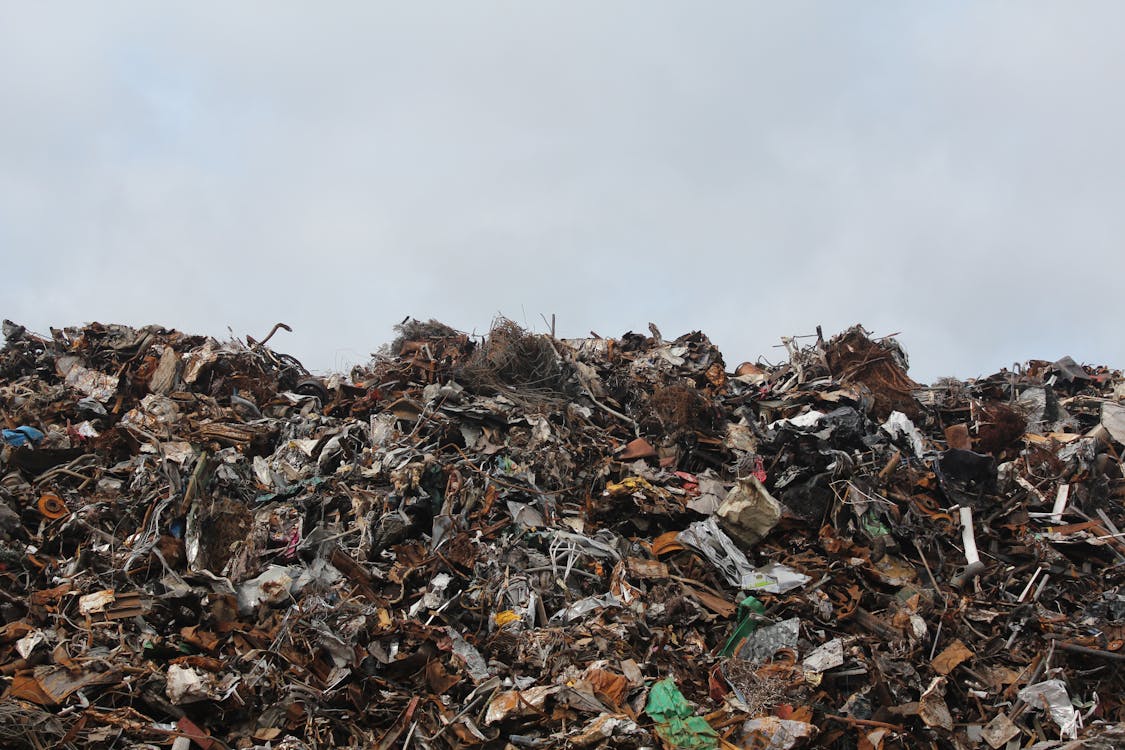What can we do as individuals in order to reduce climate change and decrease our carbon footprint?
Solution 1
In your homes

Some ways that we can reduce our carbon footprint in our homes is by unplugging devices when they aren’t needed because even if they aren’t in use, they are still using energy, therefore, it is still contributing to your carbon footprint. We should also turn off any unnecessary lights and try to use daylight as much as possible. Another strategy to reduce climate change is to switch our regular light bulbs to LED light bulbs in order to have a more environmentally friendly home. Even though LED light bulbs cost more, they use a quarter of the energy and last up to 25 times longer, which means fewer light bulbs in the landfills. Another way that we can help reduce our carbon footprint in our homes is by washing our clothes with cold water and line drying them when possible. This is much better for the environment and will cut down your bill. Clothes dryers are one of your homes’ largest energy consumers and for the average family emits a lot of carbon every year. Air-drying can reduce your home’s carbon footprint by around 2,400 pounds per year. Using less water will also help decrease your carbon footprint since it saves energy. Not only does it save energy, but using less water means a clean water supply for the future. Some ways to reduce your water usage is turning the water off when not in use – such as when you are brushing your teeth, washing dishes or cleaning up, taking shorter showers and more. In order to have a more environmentally friendly shower, you can install a low- flow shower head to reduce hot water use and reduce water usage during your shower. Another strategy is lowering your thermostat in the winter and raising it in the summer. Instead of using air conditioning during the summer, try and use fans because they require less electricity. Trapping heat in your house is important during the winter in order to use less energy heating it and cutting down on your bill as well. Well – insulated homes require less energy to heat up, which means that fewer greenhouse gases will be released into the atmosphere. A study found that increasing insulation in homes could decrease CO2 emissions by eighty million tons per year. Planting a garden also helps with reducing your carbon footprint since plants absorb carbon dioxide. A garden is also bee-friendly, which makes this solution even better. You could make a vegetable garden, a flower garden, a tree garden, whatever you want. It will help reduce your carbon footprint and help the environment.
Solution 2
Transportation

Try to drive as little as possible. A good alternative would be walking, biking, taking transit and if you must drive, maybe try and carpool. Also, while driving, try to avoid and unnecessary braking and acceleration, because some studies show that aggressive driving can cause 40 percent more fuel consumption than calm driving. By driving calmly, you can decrease your gas mileage by up to 33 percent on the highway, and up to 5 percent in the city according to the Department of Energy. You should also take care of your car and make sure that your tires are properly inflated, because this can increase fuel efficiency by three percent. Each vehicle emits around 4.6 metric tons of carbon dioxide per year. In the US, public transportation is saving 37 million tons of carbon emissions every year. City walkability is increasing and so are bike lanes. Also, try and limit your flights, because flights can take responsibility for a huge portion of your annual carbon footprint. On shorter trips, opt to drive instead, since it will probably emit fewer greenhouse gases. Transportation is one of the major sources of carbon emissions every year and thinking before taking a car instead of walking can reduce CO2 emissions and your carbon footprint. Vehicles make up about one third of the US air pollution. Buying a fuel-efficient car can lower air pollution, as well as your carbon footprint and can also save you money.
Solution 3
Diet

One of the most effective ways that you can reduce your carbon footprint is to decrease meat in your diet or cut it out entirely. Limiting your meat consumption can make a large impact. This is because greenhouse gas emissions from agriculture are an even larger problem than fossil fuels. This doesn’t mean you have to become a vegetarian but consuming less meat will help our environment. Cutting down on meats such as sheep and cow would be the best, since they are the animals that produce the most methane. The average American eats around 8.5 ounces of meat every day. To get one pound of beef, over 5,000 gallons of water is needed. A research from Oxford found that if every single family in the UK ate a plant-based meal instead of a red meat-based just once per week, the impact on the environment would be equal to taking 16 million cars off the roads. By consuming chicken instead of beef for just one year, you will make the carbon dioxide emissions smaller by 882 pounds, and by having one vegetarian meal per week, you could save the GHG equaling to driving 1,160 miles, according to the University of Michigan. Another thing to consider is buying local, organic and in season produce. Consuming foods that are locally grown in your city or surrounding area helps reduce your carbon footprint by eliminating shipping foods from other countries. Whenever you’re shopping for food, think: the closer, the better. Even better, growing your own fruits and vegetables or sticking to foods from a local farm. Buying food from elsewhere means that the produce was probably picked before it was ripe causing less nutrients available in it. Buying and consuming foods that have traveled less air miles are becoming more and more popular. Choosing local and organic foods that are in season is great, because transportation from far away uses fossil fuels for fuel. Another study in Oxford found that excluding meat and dairy products from our diets could reduce a person’s carbon footprint by up to 73 percent.
Solution 4
Waste

There are a lot of ways to be smart about your waste. One of the strategies to be smart about waste is by buying things in bulk and using your own reusable containers and using your own reusable bag when you go grocery shopping, instead of purchasing a plastic bag. Plastic bags take hundreds of years to decompose and are a threat to wildlife. Hundreds of thousands of marine mammals die every year, because they think that the plastic is food, so they ingest it. These bags are filled with harmful chemicals and not only do animals ingest these, they also suffocate in them. When shopping, try to also avoid buying items with excess packaging. Another thing to do is reuse everything as much as you can and being smart about the waste you produce. After you’ve reused your things as much as you can; recycle if possible. Composting is also an option to help reduce your waste, by composting the organic matter you produce in your household. If you don’t want something anymore, you can donate your things to second-hand stores, charities and more. Using reusable bags, containers, utensils, water bottles and more can also help reduce your carbon footprint.
Solution 5
Fashion and donating

Something that affects your carbon footprint, is buying fast fashion. Fast fashion is the term used for trendy, cheap fashion items that’s go out of style quickly; and that results to people throwing these items out. Fast fashion production produces 1.2bn tons of CO2 per year, which is more than the aviation and shipping industries combined, are turned into one million tons of waste added to the landfills around the world every single year. These items produce methane as they decompose, which contributes largely to climate change. Even though the four-dollar sequined tee shirt looking at you may seem temping in the store, remember to think about the future if the item and where it will be in a year. Will you wear it? Is it worth buying, or will it just end up in the landfill? Before buying a clothing item, think if it is practical, if it will be able to be worn a year or two after buying it and if the material is long-lasting. Today, the average American disposes of around 80 pounds of clothing each year and 85 percent of that ends up in landfills. Most fast fashions come from China and Bangladesh, therefore, shipping these items to the U.S needs the use of fossil fuels, further contributing to climate change. In addition, up to 35 percent of the microplastics found in the ocean come from clothing. To make fast fashion even worse, it wastes tons of water as well. An estimated 79 billion cubic meters of fresh water is used every year by this industry and 10,000 to 20,000 liters of water is consumed in the production of a tee shirt and a pair of jeans. Something you can do in order get rid of unwanted items is donating them to second hand stores, charities and more. Another great idea is shopping for items from second had stores, in order to reuse things.
Bibliography:
Cho, Renee, et al. “The 35 Easiest Ways to Reduce Your Carbon Footprint.” State of the Planet, 26 Aug. 2019, blogs.ei.columbia.edu/2018/12/27/35-ways-reduce-carbon-footprint/.
“Top 20 Ways to Reduce Your Carbon Footprint.” 20 Ways to Reduce Your Carbon Footprint, www.globalstewards.org/reduce-carbon-footprint.htm.
Holth, Jesse. “7 Instant Ways To Reduce Your Carbon Footprint.” HuffPost, HuffPost, 6 June 2017, www.huffpost.com/entry/7-instant-ways-to-reduce-your-carbon-footprint_b_59321992e4b00573ab57a383.
Clarke, Laurie. “The Practical Ways to Reduce Your Carbon Footprint (That Actually Work).” WIRED, WIRED UK, 17 Aug. 2019, www.wired.co.uk/article/reduce-carbon-footprint.
Peters, Steven. “Want to Make Your Life More Environmentally Friendly? Here’s 30 Ways.” USA Today, Gannett Satellite Information Network, 17 June 2019, www.usatoday.com/story/money/2019/06/17/climate-change-30-ways-to-make-your-life-more-environmentally-friendly/39366589/.
Rahman-Jones, Imran. “How to Be More Eco-Friendly in Everyday Life.” BBC News, BBC, 22 Apr. 2019, www.bbc.com/news/newsbeat-47990742.
Petter, Olivia. “7 Ways to Live a More Environmentally Friendly Life.” The Independent, Independent Digital News and Media, 8 Oct. 2018, www.independent.co.uk/life-style/environmentally-friendly-un-report-greenhouse-gas-emissions-a8574481.html.
Photos:
Reflection for ADL10:
In order to research my question; What can we do as individuals in order to reduce climate change and decrease our carbon footprint?, I asked a few more questions, such as: “What are some strategies to reduce our carbon footprint in our everyday life?” and, “How can we live a more climate change friendly lifestyle?”. I also decided to focus my research on people in their 20’s and 30’s, because they’re starting individual lives and I think that it is important for them to know how to start an environmentally friendly life on their own. I used Google to do research on my questions, Easybib to cite all my sources in the form of MLA, Pexels for pictures and I also used some information that I’ve learnt in class. I cited all my sources in my bibliography. To investigate this topic, I visited multiple credible websites and gathered the key points and the most important information. After having done that, I would verify the information with other credible websites in order to make sure the information I was collecting was correct. I also read over the websites and checked if they were credible to make sure that someone wasn’t writing false, random information. After having done these things, I took the key points from the websites and put them into my own words without plagiarizing. I think that this was a great opportunity to practice finding credible website, taking the key points and turning them into my own words. I found this assignment fun and a good learning opportunity. I could have better managed my time during this project, added more photos and more information. I also could have included graphs in order to support my ideas. In conclusion, I really enjoyed this assignment and I am happy that I got to learn more strategies on how to decrease my carbon footprint in my everyday life.
Great job examining how we can change the culture as individuals to mitigate our effects on climate change. One thought is to be more specific. I love how you have 5 solutions with lots of great media but being more specific in your question would help you be more specific in your answer. If you were to embrace one of the things on your list of solutions, what would it be?
Thank you for your feedback. I think that I had to embrace one of my solutions, it would be thinking even more about transportation and thinking before taking a car somewhere, instead of walking, biking or taking public transportation. I am already embracing most of these strategies in my everyday life, because I think that being conscious about our carbon footprint is important.
I am super impressed by your blog ! I love that you went beyond the expectations and used 5 very well explained solutions in your final project. However, I do have a few questions. Do you believe that you, as an individual are following these solutions? If not, how might you adjust your lifestyle to do so? Today, I find that people are not always as cautious as they should be about climate change and the amount of waste we omit. How might you go about convincing others to commit to your 5 solutions?